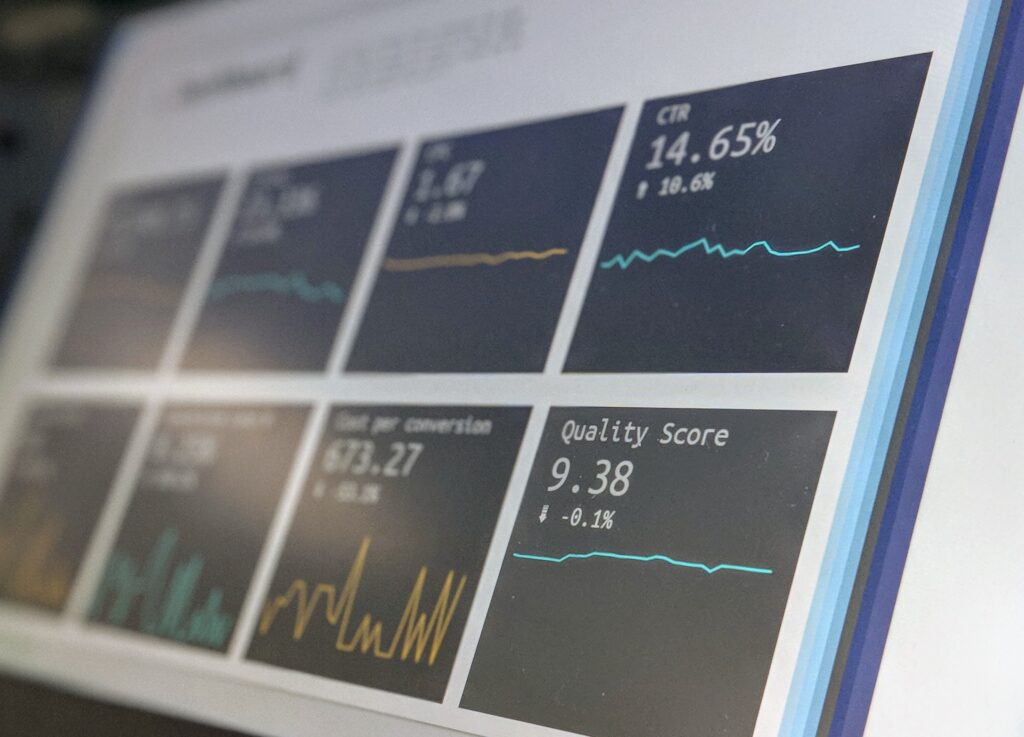Data Management Strategies: Expert Tips on InformationWeek

In the fast-paced and ever-evolving technology landscape, effective data management strategies have become paramount for organizations looking to thrive in the digital age. As highlighted on InformationWeek, a trusted source for tech industry news and analysis, staying ahead of the curve requires a comprehensive understanding of topics such as digital transformation, cybersecurity, AI and machine learning, sustainability, infrastructure, and software. With a wide range of resources, including newsletters, reports, online and live events, and white papers, InformationWeek, part of the Informa Tech Division of Informa PLC, provides expert tips and insights to help businesses navigate the complexities of data management and optimize their operations. Whether you’re a startup founder, a marketing professional, or an IT manager, harnessing the power of data is essential for growth and success in today’s competitive landscape.

Data Management Strategies
Data management is a critical process that involves organizing, storing, and maintaining data to ensure its accuracy, availability, and security. With the increasing volume and complexity of data in today’s digital age, having effective data management strategies is crucial for businesses to gain insights, make informed decisions, and remain competitive.
Importance of Data Management
Data is the lifeblood of any organization, and effective data management is essential for several reasons. Firstly, it allows businesses to have a single source of truth by ensuring that data is accurate, consistent, and up-to-date. This enables better decision-making and reduces the risk of errors or misunderstandings due to conflicting information.
Additionally, data management enhances data security and privacy. With the growing concerns of data breaches and regulatory compliance requirements such as the General Data Protection Regulation (GDPR), organizations must implement robust data management practices to safeguard sensitive information and protect their reputation.
Furthermore, data management facilitates data integration and analysis, enabling businesses to combine and analyze data from multiple sources to uncover valuable insights and patterns. This can lead to improved operational efficiency, streamlined processes, and better customer service.
Challenges in Data Management
While data management is crucial, it is not without its challenges. One of the primary obstacles is the sheer volume of data that organizations generate and store. With the exponential growth of data, managing and organizing it becomes increasingly complex. This requires businesses to invest in scalable and efficient data management systems and tools.
Another challenge is data quality. Poor data quality can significantly impact decision-making and operational efficiency. Organizations must ensure that their data is accurate, complete, and consistent through regular data quality assessments and data cleansing techniques.
Data integration can also be a major challenge in data management. With data residing in various systems and formats across different departments and applications, integrating data into a cohesive view can be daunting. This requires organizations to establish effective data integration strategies and leverage technologies that enable seamless data integration.
Benefits of Effective Data Management
Implementing effective data management strategies offers several benefits for organizations. Firstly, it empowers businesses to make data-driven decisions based on reliable and accurate information. This enables organizations to gain a competitive advantage, make more informed choices, and identify new opportunities.
Effective data management also improves collaboration and communication within an organization. By maintaining a single source of truth and ensuring data consistency, employees can access and share information easily, leading to better teamwork and productivity.
Additionally, efficient data management enhances customer experience. By having a holistic view of customer data, organizations can personalize their interactions and provide superior customer service. This improves customer satisfaction and loyalty, leading to increased revenue and retention.
Furthermore, effective data management enables organizations to comply with industry regulations and data privacy requirements. By ensuring the security and privacy of customer data, organizations can avoid legal and financial consequences associated with data breaches or non-compliance.
Components of a Data Management Strategy
A comprehensive data management strategy should incorporate various components to address the challenges and maximize the benefits of data management. These components include:
-
Data governance: Data governance defines the policies, procedures, and guidelines for managing data effectively. It establishes roles and responsibilities for data management, ensures data quality and integrity, and enforces compliance with regulations and privacy requirements.
-
Data quality: Data quality refers to the accuracy, completeness, consistency, and reliability of data. Implementing data quality assessment techniques, data cleansing, and data validation processes are essential for maintaining high-quality data.
-
Data integration: Data integration involves combining and harmonizing data from multiple sources into a unified and consistent view. It enables seamless data exchange and integration across systems, applications, and departments, facilitating better decision-making and analysis.
-
Data security: Data security is crucial for protecting sensitive information from unauthorized access, breaches, and other security risks. Implementing data encryption, access controls, and security measures such as firewalls and intrusion detection systems help safeguard data from potential threats.
-
Data storage: Choosing the right data storage solution is essential for efficient data management. Organizations can opt for cloud-based storage solutions or on-premises storage depending on their needs, considering factors such as scalability, cost, accessibility, and security.
-
Data analytics: Data analytics leverages advanced technologies and techniques to analyze and interpret data, uncover patterns, trends, and insights. By utilizing data analytics tools, organizations can gain valuable insights to drive decision-making, optimize operations, and improve business outcomes.
-
Data retention and lifecycle management: Data retention defines the period for which data is stored, while data lifecycle management involves the processes and policies for managing data throughout its lifecycle. Establishing retention policies, adhering to regulations, and implementing data destruction and disposal procedures are crucial for effective data management.
-
Data governance tools and technologies: Various tools and technologies, such as data management platforms, data catalogs, and master data management systems, can assist organizations in implementing and managing their data management strategies effectively.
By integrating these components into a comprehensive data management strategy, organizations can overcome challenges, derive value from their data, and achieve their business objectives.
Data Governance
Defining Data Governance
Data governance is the overarching framework that defines the policies, processes, and guidelines for managing, protecting, and utilizing data within an organization. It ensures that data is accurate, trustworthy, and available for decision-making, while adhering to regulatory requirements and privacy standards.
At its core, data governance focuses on establishing accountability, ownership, and stewardship of data across the organization. It involves defining roles and responsibilities for data management, establishing data standards and policies, and implementing mechanisms to monitor and enforce compliance.
Creating a Data Governance Framework
Creating an effective data governance framework involves several key steps. Firstly, organizations need to clearly define their data governance objectives and align them with their overall business goals. This includes identifying the critical data assets, determining data ownership, and defining the desired outcomes of data governance initiatives.
Next, organizations must establish a governance structure that outlines the roles, responsibilities, and decision-making processes for data management. This includes appointing a data governance team or committee and defining their authority and accountability.
Once the governance structure is in place, organizations need to develop and communicate the data governance policies and guidelines to all relevant stakeholders. This ensures that everyone understands their roles, responsibilities, and the expected standards for data management.
Effective data governance also requires organizations to establish data quality management processes and practices. This includes conducting data quality assessments, defining data quality metrics and thresholds, and implementing data cleansing and validation techniques.
Furthermore, organizations should establish mechanisms for monitoring and enforcing compliance with data governance policies. This may involve regular audits, data governance reviews, and the implementation of data governance tools and technologies.
Roles and Responsibilities
Data governance involves several key roles and responsibilities that are critical for the success of data management initiatives. These roles include:
-
Data Steward: A data steward is responsible for ensuring the quality, integrity, and accuracy of specific data sets. They act as custodians of the data, ensuring that it is properly managed, protected, and used in accordance with data governance policies.
-
Data Owner: A data owner is responsible for the overall management and governance of specific data domains. They define data standards and policies, establish data quality metrics, and ensure that data is used appropriately and aligned with business objectives.
-
Data Governance Committee: The data governance committee comprises key stakeholders from various departments and functions within the organization. They are responsible for making decisions regarding data governance policies, resolving data-related issues, and ensuring compliance with regulations and standards.
-
Chief Data Officer (CDO): The CDO is a senior executive responsible for overseeing the organization’s data management and governance initiatives. They establish the data governance strategy, ensure alignment with business objectives, and drive the implementation of data governance best practices.
Data Governance Best Practices
To ensure the effectiveness of data governance initiatives, organizations should follow best practices:
-
Establish an enterprise-wide data governance program: Data governance should be approached holistically, encompassing all data assets and stakeholders across the organization. This ensures consistency, alignment, and collaboration in data management efforts.
-
Clearly define roles and responsibilities: Roles and responsibilities for data governance should be clearly defined and communicated to all stakeholders. This ensures accountability, ownership, and clarity in data management processes.
-
Engage and involve key stakeholders: Data governance initiatives require collaboration and participation from various departments and functions. Engaging stakeholders early on and involving them in decision-making processes ensures buy-in and support for data governance efforts.
-
Implement data quality management processes: Data quality is the foundation of effective data management. Implementing data quality assessments, cleansing techniques, and validation processes ensures that data is accurate, complete, and consistent.
-
Continuously monitor and measure data governance effectiveness: Regular monitoring and measurement of data governance processes and outcomes are essential to identify areas for improvement and ensure ongoing compliance with data governance policies.
By implementing these best practices, organizations can establish a robust data governance framework that enables effective data management, enhances decision-making, and ensures compliance with regulations and privacy standards.

Data Quality
Understanding Data Quality
Data quality refers to the accuracy, consistency, completeness, and reliability of data. It is a critical component of effective data management as poor data quality can lead to erroneous insights, incorrect decisions, and operational inefficiencies.
Data quality issues can arise from various sources, including data entry errors, system integration issues, outdated or duplicate records, and inconsistent data formats. These issues can result in data inconsistencies, missing values, and inaccuracies that can impact the reliability and usability of the data.
To ensure data quality, organizations must establish data quality standards and metrics that define the desired level of data quality. These standards may vary depending on the specific requirements and context of the organization and its data.
Data Quality Assessment
Data quality assessment is the process of evaluating the quality of data against predefined data quality standards. It involves analyzing the data for errors, inconsistencies, and completeness to identify areas that require improvement.
Data quality assessment typically involves the following steps:
-
Data profiling: Data profiling involves collecting statistical information about the data, such as the number of records, data types, and distribution. This helps to understand the overall quality and structure of the data.
-
Data validation: Data validation aims to ensure that the data meets predefined rules and standards. It checks for data accuracy, completeness, and consistency by comparing the data against predefined validation criteria.
-
Data cleansing: Data cleansing involves correcting or removing errors, inconsistencies, and inaccuracies in the data. This may include removing duplicate records, standardizing data formats, and correcting data entry errors.
-
Data enrichment: Data enrichment involves enhancing the data with additional information or attributes to improve its quality and usability. This may include adding missing data, correcting outdated information, or appending data from external sources.
-
Data monitoring: Data monitoring is an ongoing process that involves tracking data quality metrics and continuously assessing the data for any quality issues. It helps to identify and address data quality issues in real-time, ensuring the reliability and accuracy of the data.
Improving Data Quality
Improving data quality requires a systematic approach that involves both technical and organizational measures. Here are some key steps to improve data quality:
-
Define data quality standards: Clearly define the data quality standards that align with the specific requirements and objectives of the organization. This may include standards for accuracy, completeness, consistency, and timeliness.
-
Establish data quality processes and procedures: Implement processes and procedures for data quality management, including data validation, cleansing, and monitoring. These processes should be standardized, documented, and communicated to all relevant stakeholders.
-
Educate and train data users: Data users should be educated on the importance of data quality and trained on the processes and tools for maintaining data quality. This helps to ensure awareness and adherence to data quality standards.
-
Implement data validation rules: Implement data validation rules and checks at various stages, such as data entry, integration, and transformation. These rules should be designed to identify and prevent data quality issues at their source.
-
Regularly monitor and measure data quality: Establish metrics and monitoring mechanisms to continuously assess data quality. Regularly monitor key data quality indicators and implement corrective actions when deviations from standards are detected.
-
Implement data quality tools and technologies: Utilize data quality tools and technologies to automate and streamline data quality assessment and improvement processes. These tools can help identify and correct data quality issues more efficiently and effectively.
Data Cleansing Techniques
Data cleansing, also known as data scrubbing or data cleaning, is the process of identifying and correcting or removing errors, inconsistencies, and inaccuracies in the data. It aims to improve data quality by ensuring that the data is accurate, complete, and reliable.
Data cleansing techniques can vary depending on the specific data quality issues and the organization’s requirements. Here are some commonly used data cleansing techniques:
-
Removing duplicate records: Duplicate records can occur when data is entered multiple times or when data is merged from different sources. Identifying and removing duplicate records helps to ensure data accuracy and avoid redundancy.
-
Standardizing data formats: Inconsistent data formats, such as different date formats or address formats, can make data analysis and integration challenging. Standardizing data formats ensures data consistency and simplifies data processing.
-
Correcting data entry errors: Data entry errors, such as misspellings, typographical errors, or incorrect values, can impact the reliability of the data. Implementing data validation checks and correcting data entry errors helps to ensure data accuracy.
-
Validating data against predefined rules: Data validation involves comparing the data against predefined validation rules or criteria to identify any inconsistencies or violations. Validating data helps to ensure that it meets the required standards and rules.
-
Removing outliers: Outliers are data points that significantly deviate from the normal range or pattern. Removing outliers helps to improve data accuracy and can prevent skewed analysis results.
-
Completing missing data: Missing data can occur due to various reasons, such as data entry errors or system limitations. Completing missing data by imputing values or obtaining data from external sources helps to ensure data completeness.
Data cleansing can be a complex and time-consuming process, especially for large datasets. However, investing in data cleansing techniques and tools is essential for maintaining high-quality data and maximizing the value of data-driven insights.
Data Integration
Importance of Data Integration
Data integration is the process of combining data from various sources and systems into a unified and cohesive view. It plays a crucial role in data management as it enables organizations to leverage the full potential of their data by providing a comprehensive and accurate picture.
Data integration is essential for several reasons. Firstly, it enables organizations to gain a holistic view of their data by integrating data from different departments, systems, and applications. This helps to eliminate data silos and enables better decision-making by providing a comprehensive and accurate understanding of the organization’s operations.
Secondly, data integration enhances operational efficiency by enabling seamless data exchange and flow across systems. By integrating data, organizations can automate processes, eliminate manual data entry, and reduce errors and inconsistencies associated with duplicate data.
Thirdly, data integration enables organizations to leverage the value of their data through advanced analytics, reporting, and business intelligence. By combining and harmonizing data, organizations can uncover valuable insights, patterns, and trends that can drive business growth, improve customer service, and optimize operational processes.
Types of Data Integration
There are various types of data integration techniques and approaches, depending on the nature of the data and the organization’s requirements. Some common types of data integration include:
-
Batch or offline data integration: This type of data integration involves periodically extracting and transforming data from various sources and loading it into a centralized data warehouse or data mart. It is typically done on a scheduled basis, such as daily or weekly, to provide up-to-date data for analysis and reporting.
-
Real-time or near-real-time data integration: Real-time data integration aims to provide near-instant data updates by continuously capturing and synchronizing data changes from source systems to target systems. This is achieved through event-driven architectures and technologies such as change data capture (CDC) and real-time data replication.
-
Cloud-based data integration: Cloud-based data integration involves integrating data from on-premises systems with cloud-based applications and databases. This is done through cloud integration platforms or data integration as a service (DIaaS) providers, enabling seamless data exchange between on-premises and cloud environments.
-
Enterprise application integration (EAI): EAI focuses on integrating data and processes across enterprise applications, such as customer relationship management (CRM) systems, enterprise resource planning (ERP) systems, and supply chain management (SCM) systems. EAI platforms or middleware technologies enable the seamless flow of data between these applications.
-
Extract, transform, load (ETL) data integration: ETL is a widely used data integration approach that involves extracting data from source systems, transforming it to meet the requirements of the target system, and loading it into the target system. ETL processes typically involve data cleansing, data validation, and data aggregation.
Data Integration Challenges
While data integration offers many benefits, it is not without its challenges. Some common challenges in data integration include:
-
Data complexity and heterogeneity: Data integration becomes complex when dealing with data from different sources that may have varying structures, formats, and quality. Mapping and transforming data to ensure consistency and compatibility can be challenging, especially when dealing with large and diverse datasets.
-
Data governance and security: Integrating data from multiple sources raises concerns about data governance, security, and privacy. Ensuring data integrity, protecting sensitive information, and complying with data regulations require careful planning and implementation of security measures.
-
System compatibility and interoperability: Integrating data from systems with different architectures, technologies, and protocols can be challenging due to compatibility and interoperability issues. It requires careful consideration of application programming interfaces (APIs), data formats, and data transfer protocols.
-
Data latency and synchronization: Real-time data integration requires capturing and synchronizing data changes in near-real-time. Achieving low latency and ensuring data consistency across systems can be challenging, especially when dealing with high volumes of data and complex data transformations.
-
Data validation and quality assurance: Ensuring data quality and accuracy during data integration is crucial. Data validation checks, data quality assessments, and data cleansing techniques must be implemented to identify and correct data quality issues.
Best Practices for Data Integration
To overcome data integration challenges and maximize the benefits, organizations should follow best practices:
-
Identify data integration requirements: Clearly define the objectives, scope, and requirements of data integration initiatives. This includes identifying the data sources, the target systems, and the desired outcomes of data integration.
-
Establish a data integration strategy: Develop a data integration strategy that aligns with the organization’s goals and objectives. This includes defining the data integration approach, choosing the appropriate technologies, and outlining the migration and implementation plan.
-
Standardize data formats and definitions: Standardize data formats, definitions, and terminology to ensure consistency across integrated data sources. This helps to avoid data inconsistencies, confusion, and errors during the integration process.
-
Implement data quality checks during integration: Implement data quality checks and validation rules during the data integration process. This ensures that only high-quality data is integrated, improving the accuracy and reliability of integrated data.
-
Implement data governance and security measures: Establish data governance and security policies to ensure data integrity, privacy, and compliance during the integration process. This includes defining access controls, encryption protocols, and data privacy measures.
-
Monitor and measure data integration performance: Regularly monitor and measure the performance of data integration processes. This includes monitoring data latency, data synchronization, and data transformation processes to ensure data integrity and timeliness.
-
Plan for scalability and adaptability: Consider scalability and adaptability when designing data integration solutions. As data volumes and sources grow, it is essential to plan for future expansion and ensure that the integration solution can accommodate new data sources and changing business requirements.
By following these best practices, organizations can ensure seamless data integration, improve operational efficiency, and leverage the full potential of their data assets.







